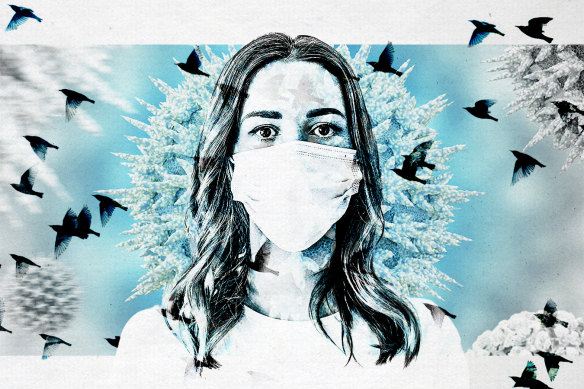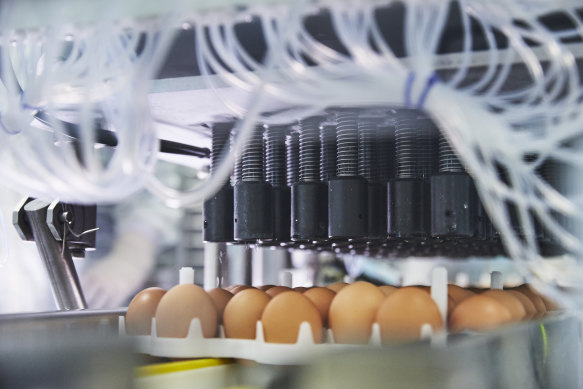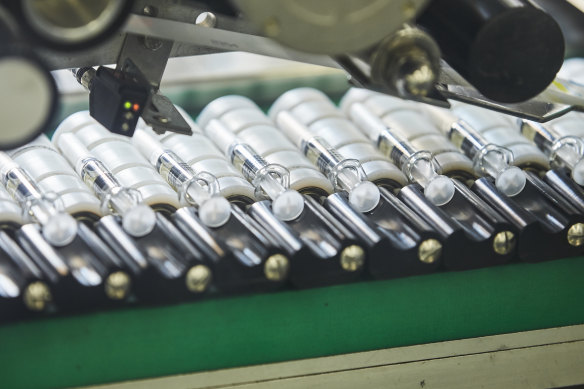By Liam Mannix
In a secure World Health Organisation lab, somewhere in the world, is a sick ferret.
The animal sniffles and grumbles, as you or I might. Inside the creature’s cells, spiked virions multiply and dance frantically, waiting to break free.

What risk does bird flu pose to human health?Credit: Graphic: Aresna Villanueva
Scientists watch the ferret closely. How sick does it get? Do its neighbours start coughing and spluttering too?
Our post-pandemic world balances on a ferret’s sneeze. But so far, so good.
In rare cases, this virus – widely known as bird flu but medically termed H5N1 2.3.4.4b HPAI, for high pathogenicity avian influenza – has spread from ferret to ferret when they are closely packed. But there’s no sign the virus is spreading through the air. “And that’s the most important step,” says Professor Ian Barr, acting director of Melbourne’s WHO Collaborating Centre for Reference and Research on Influenza.
This strain of bird flu, first spotted in 2020, poses a dramatic threat to Australia’s wild animals.
However, preparations for a bird flu pandemic in humans reveals a state of calm watchfulness. The risk remains very low. And unlike COVID-19, we have a vaccine ready to go, almost at the press of a button.
Health authorities have been preparing for a H5N1 pandemic since the virus first jumped into humans in 1997. The virus is a distant relative of the one that causes human flu, though with large genetic differences.
Biotech company CSL has a reference sample of the virus at its Parkville plant.
The company believes it could have the first batches of vaccines rolling off the production line within 100 days of a pandemic being declared, says Dr Jules Bayliss, CSL’s medical director for vaccines. “We know what we need to do.” (The government also has a stockpile of ready-made vaccines.)

If a pandemic is declared, CSL will deliver samples of the virus to chicken eggs - the first step in making a vaccine.Credit: CSL
What risk do we really face?
The consensus among experts is bird flu poses only a low risk to human health. But it is almost inevitable the virus, which has now spread globally, will cause significant infections among Australia’s birds.
“It is a when, not if, situation,” says Dr Michelle Wille, senior research fellow at the Centre for Pathogen Genomics at the University of Melbourne. “We’re just not sure if it will be this year or next year.”
Wille and Associate Professor Kirsty Short, a bird flu researcher at the University of Queensland, both fear the virus will have a catastrophic effect on Australia’s animal populations. Its arrival in Peru and Chile led to the death of more than 500,000 wild birds. “And those are just the ones that have been counted,” says Wille. “I’m extremely distressed by the situation. It keeps me up at night.”
Almost half of Peru’s pelicans were dead within a few months of its arrival; the country’s Pacific coast is also marked with the bodies of thousands of sea lions that have died of a bird flu variant.
But the risk to humans is far lower. To transmit effectively in humans, the virus would need to accumulate several major changes to its eight gene segments all at once.
First, the virus would need to handle the cooler temperatures of airways in the human body; chickens run about eight degrees warmer.
Then the virus would need to spread between mammals via the air. At least five changes to the virus’s genetic code seem necessary for that to happen. But even those tweaks “wouldn’t provide that ability in the real world”, says Dr Frank Wong, a senior research scientist at the new CSIRO Australian Centre for Disease Preparedness.

CSL believes its bird flu vaccine would be available within 100 days of a pandemic being declared.Credit: CSL
That’s because the virus also has to carve a key that can lock into human cells rather than avian ones. That too would require several genetic changes.
While the virus remains in birds, the odds of all those changes occurring are very low because they would also make the virus essentially unable to replicate within a bird.
“H5 viruses have been circulating in different shapes and forms since 1996 and haven’t gained all of these required changes,” says Barr.
The risk comes from sustained transmission within mammals, which would give the virus a chance to adapt, and that is why scientists are paying very close attention to a widespread H5N1 outbreak among cows in the United States.
From 2003 to May this year, 891 cases of human infections with H5N1, including 463 deaths, have been reported to the WHO. Almost all these patients had close contact with infected live or dead birds, or contaminated environments.
How to cut your risk
We can’t stop birds migrating, but we can react quickly when the virus comes in.
Other countries are trying innovative solutions. Finland is rolling out vaccines manufactured by CSL to poultry workers to create a firewall for human transmission – a move Australian authorities are closely watching, Health Minister Mark Butler’s office confirmed.
South Africa is testing vaccination for its penguins. If successful, we could do something similar for species under the most threat from the virus, such as our black swans.
Beyond that, our single biggest modifiable risk factor is the biosecurity around our vast population of chickens. “The more poultry farming we have, the higher the risk,” says Short.
If farmers don’t keep security tight, the virus can get in from wild birds and quickly infect whole flocks, before spreading back out to other animals – a risk known as amplification.
Victoria is dealing with eight infected poultry farms. They have been quarantined and all chickens on the properties killed.
That amplification risk only exists because we pack poultry in huge numbers into barns or cages so we can have cheap chicken and eggs.
To cut that risk, we can eat less chicken. “That is a great idea, part of the systemic solution,” says Dr Katie Woolaston, an expert on animal and pandemic law at the Queensland University of Technology, “and something that individuals can action.”
The Examine newsletter explains and analyses science with a rigorous focus on the evidence. Sign up to get it each week.